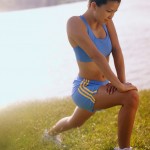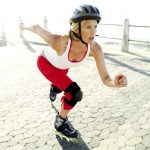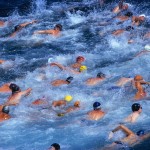 Be Mindful this Weekend by Using Proper Food Safety Habits
Be Mindful this Weekend by Using Proper Food Safety Habits
Who’s ready to get their grill on? The weekend is just around the corner and thousands of us will be getting together with friends and family and cooking outside. Whether you’re the host of the gathering or you’re headed to a picnic planned by someone else, you’ll want to make sure the food you offer is properly prepared to prevent food-borne illness. Be mindful of the entire food preparation process; from the grill we use to cook the burgers to the dishtowel we use to dry our hands to the plate we carry raw foods on. To keep you, your friends and the entire family safe, be sure to use proper techniques when preparing, serving and re-handling foods.
• Keep equipment safe- If you have not cleaned your grill since last year, now is the time. Scrub the grill, outdoor utensils, coolers and other containers with hot soapy water before cooking your favorite summertime foods.
Your cooking equipment also includes your apron & dishtowel. These items can harbor bacteria if you are using them to clean up spills, wipe raw juices or wipe dirty hands. Consider paper towels for drying hands and wipes for cleaning spills.
Lastly, avoid cross-contamination, one of the most common concerns during outdoor grilling season. Keep raw foods and ready-to-eat foods separate. Be sure to use a new plate to place prepared foods. Never brush meats to marinate with the same utensil you brushed raw foods. If you’re headed to a picnic, bring lots of extra plates, utensils, paper towels and make sure there is extra soap and water for keeping hands clean.
• Prepare food safely- this includes any prep work that is being done in preparation for your picnic or party. Be sure to wash hands before, during and after preparation. Make sure you never partially pre-cook meat or poultry before transporting. If the item must be precooked, cook it until it is done, cool, pack in the cooler and then re-heat as necessary.
Be sure to use a meat thermometer to check that food has been cooked to a proper internal temperature. You can’t rely on color, smell, taste or texture alone to determine if meat is thoroughly cooked. A food thermometer also prevents you from overcooking meat and poultry. Never reuse marinates that have come into contact with raw meats.
• Keep food safe after cooking- The higher the temperature, the less time foods can remain out of refrigeration. The typical two hour rule does not apply in hot weather (greater than 90 degrees F). Rather, it gets cut to 1-hour. Keep cold foods on ice so that they stay below 40◦ F or hot foods hot (over 140◦ F).
You don’t want to be remembered for the host with the dirty grill, or the person that prepared the burgers that made everyone sick. For more food safety information visit www.homefoodsafety.org.
Heather Mangieri is a national media spokesperson, registered dietitian and owner of Nutrition CheckUp in Pittsburgh, PA. For more information visit http://www.nutritioncheckup.com. You can follow Heather on Twitter @nutritioncheck and join her facebook community at https://www.facebook.com/NutritionCheckUp
 Subscribe
Subscribe







